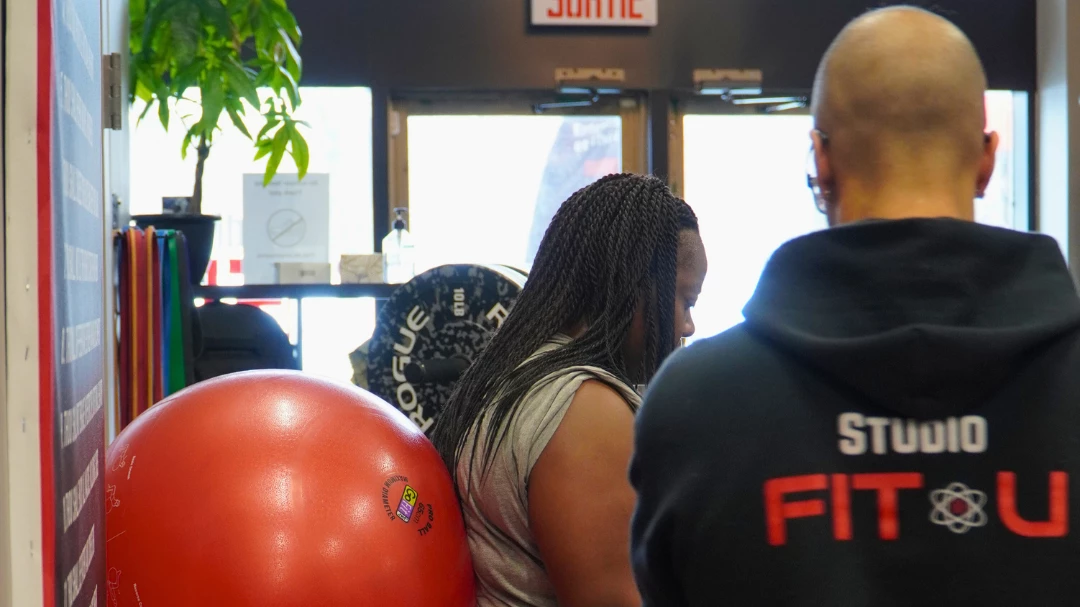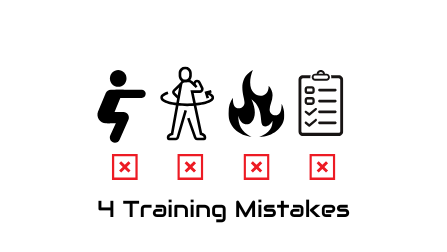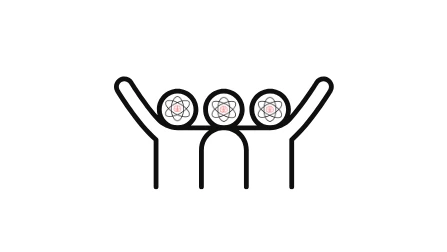7 Tips to Lose weight When You Have Chronic Pain
Studio Fit U
Training
Published: 07/11/2024
Update: 01/04/2025

I’ve always had bad knees… When I was 13, my doctor told me I had a knee condition with a name I couldn’t pronounce and advised me to stop exercising.
Looking back, I wish someone had told me I didn’t need to quit altogether. Instead, I could adapt my activities to the pain and, even more importantly, exercise could actually help ease the pain.
So, here are seven tips to get back in shape when you have chronic pain.
- Set realistic expectations
- Have a clear plan
- Choose low-impact exercises
- Focus on quality over quantity
- Listen to your body (pain vs. discomfort)
- Adopt a gradual approach
- Work with a professional
1. Set Realistic Expectations
It’s great to feel motivated for weight loss, but motivation can sometimes lead to setting overly ambitious goals. Setting realistic fitness goals that consider your pain level and current fitness can prevent frustration.
While big goals might seem exciting, they often (at least 99.99% of the time, in my experience) end up killing your motivation. Start with what you can do now, and stick with it.
2. Have a Clear Plan
This is crucial for gym beginners, especially if you have chronic pain. A clear workout plan serves as your roadmap, detailing exactly what to do each time you step into the gym.
With chronic pain, it’s vital to avoid improvising your workouts, as this can increase the risk of aggravating pain points and prevent you from moving pain-free.
3. Choose Low-Impact Exercises
Most conventional exercises in the gym, like squats, bench presses, and dumbbell curls, are low impact.
Start with stable, controlled exercises on machines that support your body and avoid high-impact or low-stability exercises until you feel more confident.
4. Focus on Quality Over Quantity
For those with chronic pain, the key is to prioritize form and muscle activation.
Quality over quantity is honestly essential.
Focus on proper form and stabilization first, then gradually increase your workout volume as you get stronger and more confident.
5. Listen to Your Body
Your body is your best guide for pain-free exercise. Discomfort is normal during exercise, but sharp pain is a red flag.
Think of it like the difference between the stretch of a muscle (uncomfortable but safe) and touching a hot tray (painful and harmful). Learn to recognize and respect these signals but again, your body knows about it so just listen to it.
6. Adopt a Gradual Approach
Avoid starting with long workouts and 7 stability exercises if you're recovering from a strain or chronic pain.
Slow, consistent efforts build a solid foundation without overwhelming your body, allowing it to recover and eventually to move, pain-free.
7. Work with a Professional
I mean, I’m not going to lie, the best investment that you can make if your goal is to reach your weight loss goal and to move pain free is to work with someone that’s going to be able to guide you through it.
Working with a kinesiologist or an athletic therapist is one of your best bet when it comes to moving pain free. You can check out the Team Fit U family for that
Take it easy - use these tips and you’ll eventually get there.
In the same category



The Benefits of Semi-Private Personal Training and Finding the Right Fitness Community
Training
Learn morePersonal & Personalized Training
MONTREAL
4824 Ch. de la Côte-des-Neiges, Montréal, QC H3V 1G4